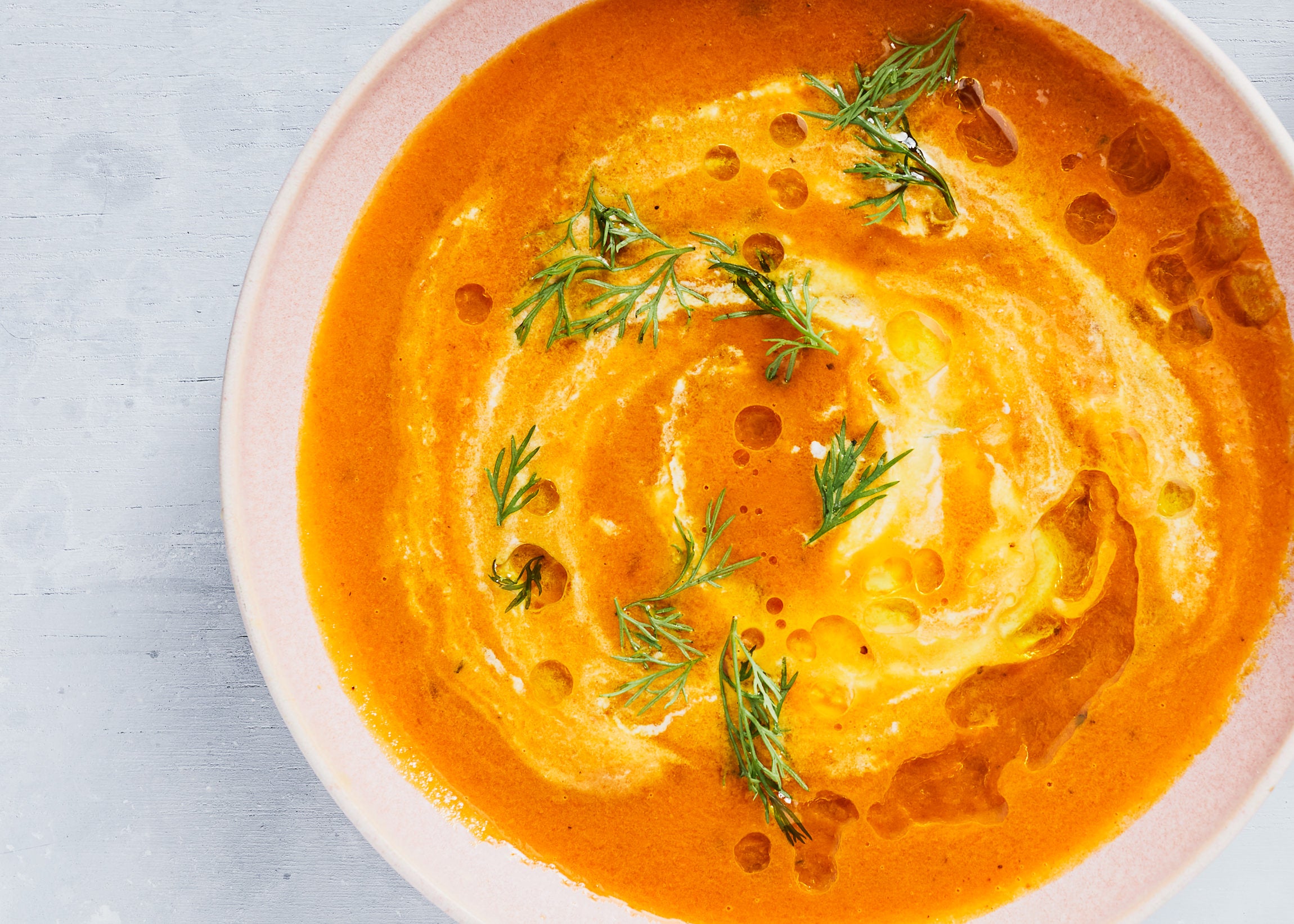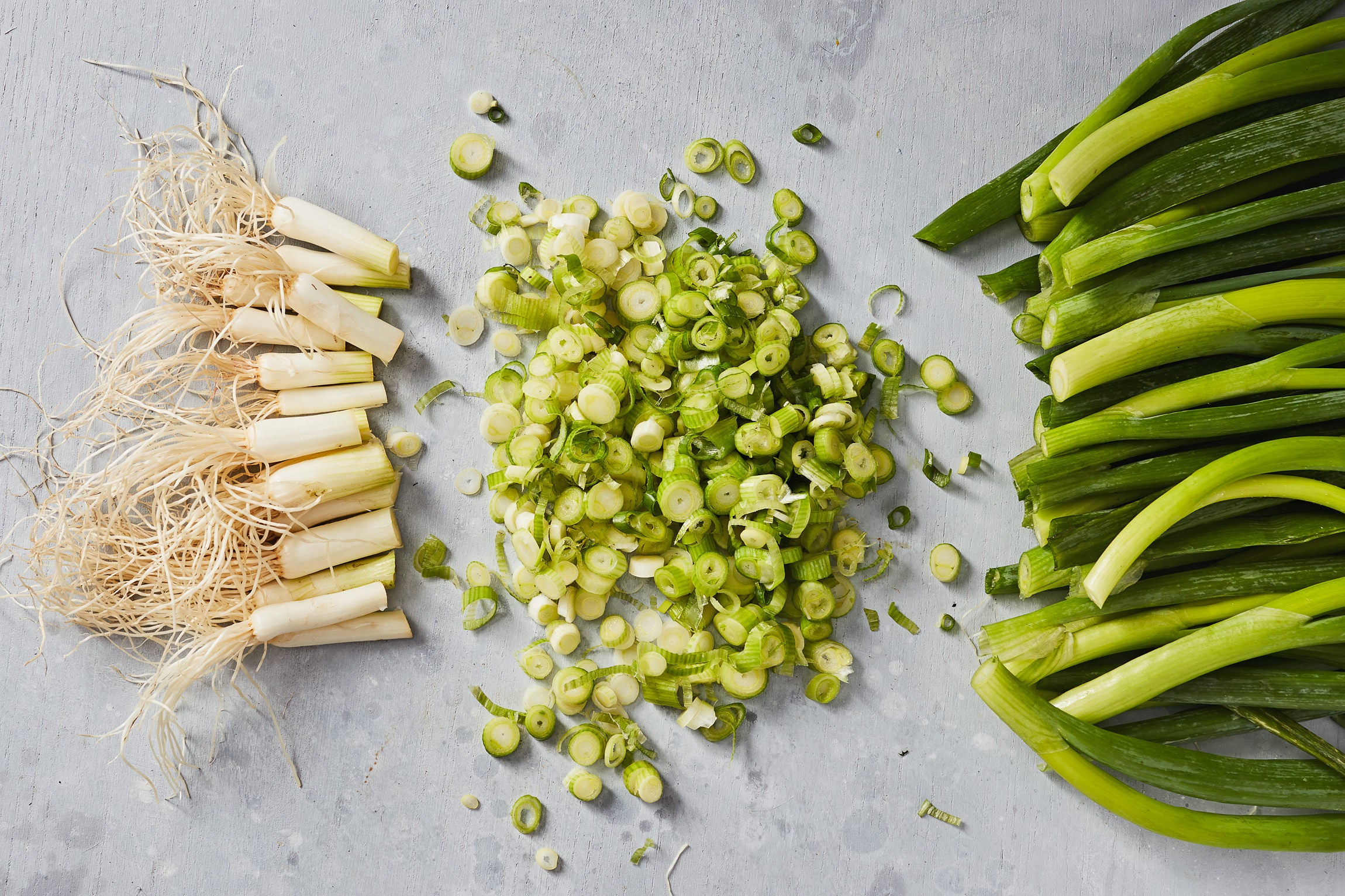Can cutting alliums out of your diet make you a more creative home cook?
Think of a savory recipe you’ve made in the past month. How does it start? If your recipe collection is anything like mine, there are two ingredients right at the top: “Onion, diced” and “garlic cloves, minced.”
For as long as I’ve been cooking, these alliums were bedrock. Anytime I didn’t know what to make, I’d start by cutting a yellow onion into cubes and milling a few garlic cloves into rubble. That simple dice-and-mince could turn into a pot of minestrone soup or a pan of pilaf, a quick mixed-veggie stir-fry or a slow-simmered Bolognese sauce.
But then I started getting sick. Occasionally at first, then more and more frequently, until I was having daily bouts of piercing abdominal pain, bloating, and what I will delicately call “gastrointestinal upset.” After several rounds of tests and doctor’s visits, I landed in the office of a gastroenterologist. He said, “This sounds like irritable bowel syndrome” and handed me a pamphlet on the low-FODMAP diet.

FODMAPs (fermentable oligosaccharides, disaccharides, monosaccharides and polyols), I learned, are fermentable sugars present in a long list of fruits, vegetables, and dairy products. In patients with IBS, digesting these foods can trigger symptoms. People have varying sensitivities to different FODMAPs, but one of the most common offenders is allium bulbs: onions, garlic, shallots, and leek stems. (Green alliums, like chives and the top parts of scallions, are exceptions.) After eliminating all FODMAPs from my diet for two months, then reintroducing them one by one, I had to face facts: I felt a lot better when I wasn’t eating onions and garlic.
The low-FODMAP diet is far from the first system of eating to limit the consumption of alliums. In certain Buddhist monastic traditions, as well as Ayurvedic medicine, onions and garlic are believed to undesirably stimulate and arouse the senses. And Jain vegetarianism proscribes eating any vegetable that grows under the ground, including allium bulbs.
As an outsider, one might assume this food is ascetic, even bland. But by relying on other flavor-rich ingredients—spices, acids, fats, fresh and fermented produce—these traditions are known for producing food as delicious as it is nourishing. Ayurveda has given us dishes like kitchadi, where toasted mustard seeds and cinnamon sticks infuse rice and dal. And in an episode of Netflix’s Chef’s Table, you can watch Jeong Kwan, a Korean Buddhist nun, laying out plates of colorful pickled lotus root, delicately garnished tofu, fried mushrooms slicked with soy sauce and sesame oil—all without any trace of meat or alliums.

So what can a self-taught American home cook like me learn from this? Quite a lot, actually. In figuring out how to live without my two bedrock ingredients, I have had to strip my knowledge of cooking down to the studs. I’ve learned the hard way that alliums contribute essential sweetness and bulk to many dishes. (Turns out you can’t just replace the onions in a carrot-ginger soup with more carrots. I tried. It was…not tasty.)
My first task was to approximate the earthy sweetness of sautéed onion. The surprising solution: vegetable scraps. Green leek tops, thinly sliced and sweated over low heat in olive oil or butter, become wonderfully onion-like. And I now jealously hoard Swiss chard stems, which have a subtle beet-like sweetness that makes them a great third musketeer in a classic celery-carrot mirepoix. Replacing garlic is harder. There really is nothing quite like the familiar sticky warmth of a fresh clove or two (or three), whether blended into pesto, steeped in a vinaigrette, or grated into yogurt.
So I’ve leaned into other beloved sharp flavors instead. Citrus is a new mainstay: I use grated zest for freshness, fresh juice for acidity, and preserved lemon or lime rind for aromatic bite. I go through bunches of fresh herbs—parsley, dill, basil, mint, thyme, rosemary, and oregano—and jars of spices like caraway, cumin, fennel seeds, and smoked paprika. I keep piles of thinly sliced fresh ginger in the freezer, to add fragrant heat to stir-fries and curries. And I’ve taken to adding a handful or two of sliced raw scallion tops to almost any savory dish I make—stews, salsas, pastas, pickles—to add back a bit of fiery allium bite.
But it’s not always about layering ingredients on top of each other. Sometimes a pinch of sugar—white or brown—is all that’s needed to replace the sweetness of sautéed alliums. And I’m always amazed at how salt can make the flavors in a dish click into place. I keep multiple kinds of salt within arm’s reach now, from kosher salt by the stove to coarse sea salt for sprinkling on at the table.
Eliminating alliums from my diet hasn’t been easy. I’d be lying if I said I didn’t miss pepperoni pizza, or French onion soup, or a Thai curry packed with garlic and shallots. I’m still trying new ways to calm my unsettled guts in the hope of one day enjoying those foods again. In the meantime, though, I’ve gotten my symptoms under control while still feeding myself food that’s full of flavor and interest. Onions and garlic may have left my kitchen, but it turns out there’s plenty of room left to explore.